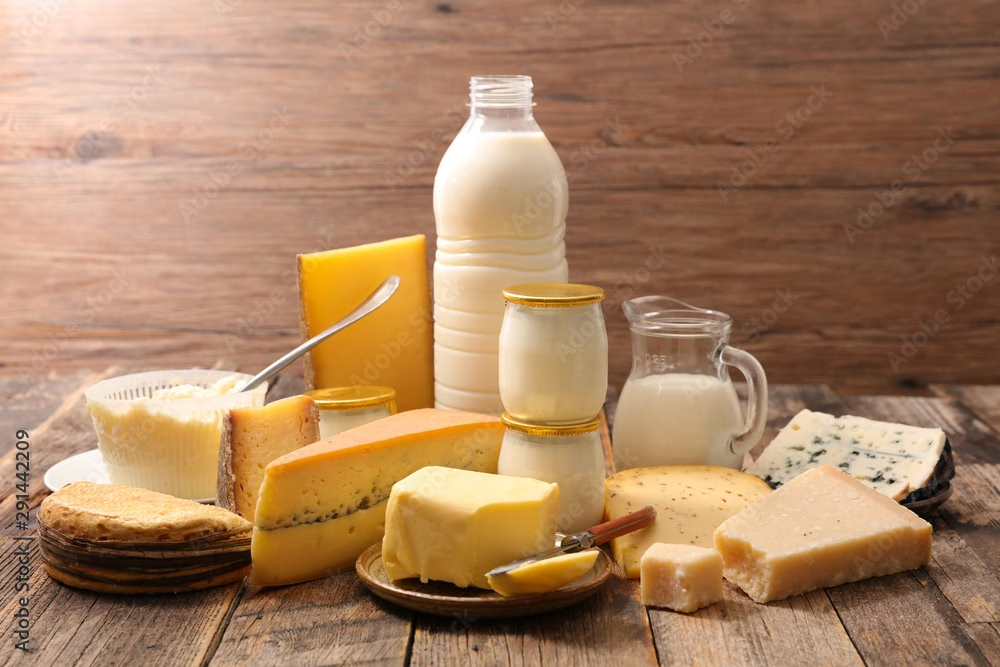Unlock hidden profits and opportunities in dairy farming. Ready to seize the golden age of dairy and boost your sales with proven tactics?
Summary: In today’s dynamic dairy industry, there’s no better time to harness new opportunities and expand your farm. With global dairy demand on the rise, driven by health-conscious consumers and an increasing demand for high-protein, nutrient-rich diets, the industry is poised for significant growth. Embracing sustainable practices and product diversification can tap into lucrative markets, while focusing on value-added products and implementing proven marketing strategies can maximize profits and ensure the longevity of your dairy business. For example, Hispanic-style cheese categories have quadrupled since 2000, and specialty cheese sales increased by 6.6% in 2020. Global demand, especially from China and India, is driving growth opportunities, with the Food and Agriculture Organization predicting a 1.6% annual increase in global milk output. The future is undeniably bright, offering a chance to significantly grow your operations.
- Global dairy demand is increasing, driven by health-conscious consumers and high-protein diets.
- Embracing sustainable practices and product diversification can open up lucrative markets.
- Value-added products and proven marketing strategies can maximize profits and ensure longevity.
- Hispanic-style cheese sales have quadrupled since 2000, and specialty cheese sales grew by 6.6% in 2020.
- Significant growth opportunities exist due to increasing global demand, particularly from China and India.
- The Food and Agriculture Organization predicts a 1.6% annual increase in global milk output.

Imagine a future where your hard work on the dairy farm translates into undeniable success and prosperity. According to a recent research by Cory Gieger of CoBank, “Dairy products have more growth potential,” and dairy sales are expected to rise, driven by a rising customer desire for high-protein, nutrient-rich diets. From cheese to yogurt, demand for dairy products increases, creating profitable prospects for farmers like you. However, keeping ahead of market developments is essential for maximizing these rewards. You can ensure your dairy farm’s success by accepting market data, broadening product offerings via innovative dairy innovations, and developing strong connections with distributors and retailers.
The Dairy Industry is Booming: Embrace the Opportunity to Expand Your Farm!
The present situation of the dairy industry is not just promising; it’s a goldmine for farmers and stakeholders. According to the USDA, dairy product sales have steadily climbed by 3% annually over the last five years. This consistent rise indicates the industry’s profitability, driven by expanding worldwide demand for dairy products and greater consumption of cheese and other dairy products in the United States. For example, cheese consumption in the United States has increased every other decade, with estimates indicating that this trend will continue.
Furthermore, the popularity of specialized dairy categories, such as Hispanic-style cheese, which has topped one pound per capita and quadrupled since 2000, demonstrates a favorable trend in demand for dairy. According to recent industry surveys, approximately 70% of respondents reported earnings in the previous five years, indicating a solid profitability margin for dairy farmers and producers.
However, it’s important to note that with growth comes challenges. Expanding operations may require additional resources like land, equipment, and labor. It may also necessitate changes in management and operational strategies. By being aware of these potential challenges, you can better prepare for them and ensure a smooth expansion process. Furthermore, more than half of the respondents want to expand their activities during the next five years, aided by favorable market circumstances and a rising customer base. Dairy product sales are expected to grow in local and foreign markets, driven by a demand for high-quality goods.
Global Dairy Demand: Unlocking International Opportunities for Your Farm!
When we look beyond our borders, the opportunity for dairy producers to enter new markets is not just significant; it’s exhilarating. Countries such as China and India are driving a substantial increase in dairy consumption. This trend is primarily driven by growing earnings and changing food habits, presenting an excellent growth potential. The Food and Agriculture Organization (FAO) predicts that worldwide milk output will expand by 1.6% yearly, driven primarily by rising demand in emerging nations. For the astute dairy farmer, this trend represents not just growth but a strategic shift toward areas where the demand for dairy is increasing. There’s never been a better opportunity to evaluate how your organization can meet these growing demands, ensuring your company rides the wave of the global market.
Riding the Wave: How Emerging Trends are Shaping the Future of Dairy
The dairy business is seeing a boom in developing trends influencing consumer behavior and market dynamics. Specialty dairy products, organic choices, and lactose-free alternatives are gaining popularity at an unprecedented rate. For example, a Mintel analysis shows that demand for organic dairy products has increased by 10% in the last year. Furthermore, Hispanic-style cheese has emerged as the fastest-growing category, with consumption exceeding one pound per person—a threefold rise since 2000. The increase in lactose-free alternatives reflects customers’ evolving tastes; market data reveals substantial growth in this sector as more people seek solutions that accommodate dietary limitations and health-conscious lifestyles.
Both customer preferences and more significant market dynamics impact these changes. Households with children, college education, and yearly incomes above $50,000 tend to choose meat and dairy substitutes. With cheese consumption in the United States tripling every other decade and expectations for ongoing expansion, dairy producers can expand their product offerings and enter these profitable market niches.
Dairy: The Nutrient Powerhouse Fueling a Health Revolution!
Dairy is becoming more popular among health-conscious customers due to its outstanding nutritional profile. Dairy products provide critical nutrients, including calcium, vitamin D, and protein. According to the National Dairy Council, dairy intake is strongly associated with enhanced bone health, particularly in children and adolescents, who benefit significantly from these nutrients throughout their development spurts. Dairy consumption, whether in milk, yogurt, or cheese, may help bone strength, muscular function, and general health.
Tradition Meets Innovation: Diversifying Dairy for a Modern Market
The dairy business is at the crossroads of history and innovation, ready to grab a larger market with new and innovative products. High-protein yogurts, for example, are a great way to appeal to health-conscious customers looking for muscle recovery treatments or a quick snack. Grand View Research estimates that the worldwide market for probiotic yogurt will reach $65 billion by 2025. This development presents a profitable opportunity for dairy producers to broaden their product offerings and increase sales. And to fully capitalize on these opportunities, embracing technology in your operations is essential. From automated milking systems to data analytics for herd management, technology can help you improve efficiency, reduce costs, and enhance the quality of your products.
The increased demand for probiotic-rich products reflects a growing consumer desire for gut health and well-being. Farmers that include probiotics in dairy products may improve the nutritional quality of their commodities while also tapping into a market interested in preventative health measures. This diversification may attract new client groups, including individuals who have previously overlooked conventional dairy products.
Furthermore, the growth of plant-based dairy replacements represents a considerable change in consumer behavior. With many people opting for vegan or lactose-free diets, providing choices like almond, oat, or soy milk will help you enter this growing market. These alternatives follow current health trends and cater to ecologically aware customers, increasing their popularity. According to MarketsandMarkets, the plant-based dairy market is expected to develop at a CAGR of 11.4% between 2020 and 2026.
Incorporating these new goods may help dairy farms stay ahead of market trends, broaden their client base, and ensure long-term development and profitability.
Unlock Untapped Potential: The Lucrative World of Value-Added Dairy Products!
Value-added products are one sector that offers significant promise to dairy producers. Artisanal cheeses, yogurt, and lactose-free choices serve specialized markets and fetch premium prices. This is not just theoretical optimism; actual data backs it up. According to the Specialty Food Association, specialty cheese sales increased by 6.6% in 2020, demonstrating significant customer demand for these premium goods.
Maximize Your Dairy Profits: Proven Marketing Strategies to Boost Your Business!
Effective marketing of dairy products may influence a company’s success. Here are some practical techniques for leveraging rising trends:
First and foremost, harness the power of social media. Platforms like Facebook, Instagram, and Twitter are ideal for reaching a broad audience. Share behind-the-scenes looks at your farm life, introduce your cows, and emphasize your dedication to quality. Engaging tales and graphics may help you connect with customers on a human level.
Next, try attending local farmers’ markets. These venues provide an excellent chance to sell directly to clients, obtain instant feedback, and establish a loyal customer base. Your presence in these markets improves revenue and brand exposure.
Collaborations with local firms may also be mutually beneficial. For example, you could promote your dairy goods by collaborating with local bakeries, restaurants, and supermarkets. These collaborations may help you reach new client groups and build community support.
Finally, take into account the value of branding and narrative. Create a distinctive brand identity that accurately expresses your farm’s beliefs and goals. Use narrative to communicate the legacy, hard work, and sustainable principles that underpin your goods. Effective branding and storytelling may convert casual purchasers into repeat customers.
Using these marketing methods, you may capitalize on current trends and establish a more significant, long-term company. This detailed research provides further information on industry trends and projections.
Green is the New Gold: How Going Sustainable Can Skyrocket Your Dairy Farm’s Success!
The increasing public interest in sustainability and ethical agricultural techniques cannot be underlined. Modern customers, particularly younger ones, are more knowledgeable and concerned about where their food comes from and how it is produced. They demand more openness and responsibility from food producers, notably dairy farmers. According to Nielsen research, 66% of customers are prepared to pay extra for sustainable items.
Adopting sustainable and ethical methods may dramatically improve a farm’s image and attract more customers. Protecting animal welfare, employing renewable energy sources, and lowering greenhouse gas emissions are popular among environmentally conscious customers. Furthermore, farms implementing ethical standards, such as fair work conditions and community involvement, often gain an edge in a competitive market.
For example, introducing pasture-based grazing systems increases animal health and milk quality while improving soil health and carbon sequestration, making it attractive to environmentally concerned consumers. Similarly, utilizing biodigesters to handle manure may convert waste into energy, demonstrating a dedication to innovation and ethical agricultural practices. Dairy producers may establish a devoted customer base that loves and supports sustainable agriculture by publicizing their efforts on social media and on-farm visits.
The Bottom Line
In essence, the future of dairy product sales is bright and on the verge of a renaissance. As we’ve seen, various variables, ranging from creative product diversification to environmentally friendly agricultural techniques, combine to offer a fertile field for development in the dairy business. Market trends show that customer tastes are changing, and those that adapt will certainly gain significantly. Approximately 70% of respondents reported earnings in the previous five years, indicating the possibility of sustained success. Adopting sustainable practices meets environmental regulations and positions your company as a leader in the green movement. Keep up with current trends, be open to innovation, and don’t fear pursuing new possibilities. The dairy business is not just surviving but flourishing; you can be at the vanguard of this exciting adventure. Consider these thoughts and remain interested, engaged, and willing to adapt and create. The future of dairy is bright, and now is the time to grab the possibilities.












